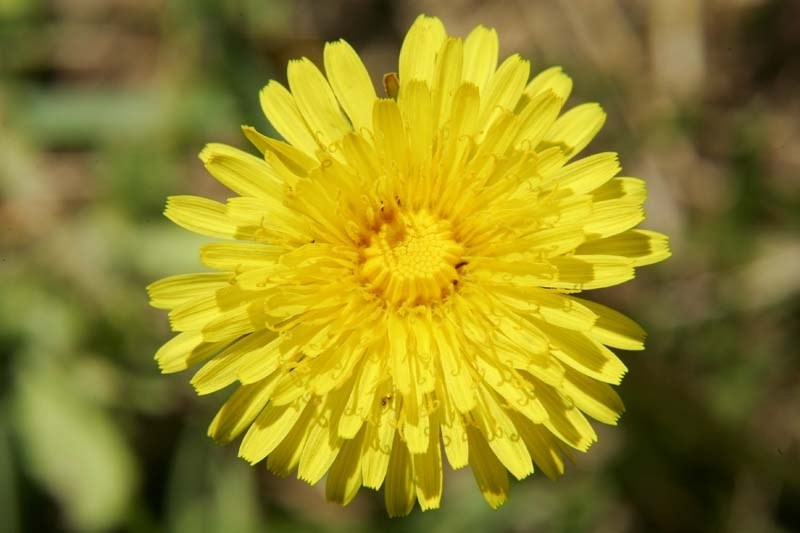If you can't beat them, eat them.
Those are the words of advice that keep popping up whenever the subject of dandelions arises. You can spend a small fortune on chemicals and waste many a weekend afternoon plucking their perfect roots out of your soil, but still they return as undauntedly perky as ever.
Local environmentalist Elke Blodgett says don't bother. She's a fan of the dandelion, which she says has myriad uses in food and medicine everywhere else in the world, "except here we try to kill them."
"Why not let a dandelion grow?," she says. "They're beautiful. The kids love them. They're just so much fun. I don't know why people hate them so."
Even Ralph Waldo Emerson once postulated, "What is a weed? A plant whose virtues have not yet been discovered."
Blodgett says there are probably 20 different wild plant species that can be eaten around the city and Big Lake. Clover is easy to pop into a salad. Fairy ring mushrooms are easy to identify and are delicious. Rose petals are great edible decorations for desserts. Even wild daisies are edible and cattails can be consumed after boiling, just like corn on the cob.
But dandelions are the big deal. Kids see the entertainment value of blowing away their seeds or reciting rhymes while popping off their yellow heads. Dandelions are much ballyhooed for their nutritional and medicinal properties. They are the ugly ducklings of the flower world. They are the beautiful and delicious weeds that you should eat.
Meet the flowers
Taraxacum officinale is the proper name for what we call the dandelion. Its genus name is derived from a compound of the two Greek words for disorder and remedy. The plant is comprised of a long taproot, a crown of leaves, a hollow stem with a touch of milk, the flower and a round seed head, all of which are entirely edible. They have evolved over millions of years throughout Europe and Asia and have a long history of culinary and medicinal uses.
Blodgett swears by them. They're good for the liver, the pancreas, the kidneys, and skin disorders like eczema, she says. It can purify the blood. It can ease heartburn. The roots are effective for aiding elimination with their laxative and diuretic properties. Dandelions are effective anti-inflammatory agents as well.
"It's the most versatile plant if ever there was one," Blodgett continues.
The list goes on and on for how it helps to lower blood sugar, help with weight loss, boost the immune system, treating warts, arthritis, lower cholesterol and blood pressure, help with emotional imbalances. They can even give you an energy boost.
In the book Edible and Medicinal Plants of the Rocky Mountains and Neighboring Territories, author and natural nutritional scientist Dr. Terry Willard calls them the "free health food pharmacy."
Besides all that, they're darned tasty and versatile. You could have fritters and dandelion root coffee for breakfast with a tasty green salad and dandelion wine for dinner.
Just be sure that you're getting dandelions that come from areas completely free from any pesticides, herbicides or other chemicals.
Discovering their virtues
Edmonton herbalist Robert Rogers never shies to put the plant on a pedestal. He offers summertime walking tours of Mill Creek Ravine to spot edible and medicinal plants and mushrooms.
"I love dandelions. I really love all the things they offer," he exclaims. "The leaf itself is (a) very choice edible. I like to steam them with a little garlic butter. That's my very favourite."
He says dandelions are excellent sources of potassium and many other beneficial compounds that help to reduce the muscle spasms and nighttime leg cramps that so many people suffer from.
Dandelion leaves contain nine times the vitamin C that lettuce does, he says, and three times the iron as spinach.
"Most people don't think of dandelion leaf as a source of iron but they're quite good. Dandelion root is also one of our best liver herbs. It has been shown in some recent studies to be very useful against various breast and prostate cancer cell lines."
Even the milk that can be squeezed out of the stems has a great way of getting rid of warts and other viruses.
Blodgett's fritters are legendary in her family. Even her relatives who don't much care for dandelions turn up in droves for these tasty fritters.
"Between Mother's Day and Father's Day, everybody comes running. Everybody loves my dandelion fritters."
"The crowns are very, very rich in the good stuff," Blodgett emphasized.
Once you run out of crowns, you can use the blossoms for the batter too. They're delicious even but they're not as nutritious or as healthy as the crowns.
A dandy recipe for fritters
Blodgett recommends finding the biggest and juiciest plants possible. These are plentiful early in the spring but they're still to be found in sparser numbers here and there. It's best to pick them either before the buds show or with the buds, but preferably before the stems or blossoms emerge.
Cut off the roots and trim off the leaves about and inch or two above the roots, leaving the crowns (and buds if they're at that stage) all intact.
Wash and dry. Dip into any thick batter and fry in olive oil like a pancake, first one side and then the other. Serve hot or cold.
"My entire family lines up and this is our favourite party meal all spring," she says.




